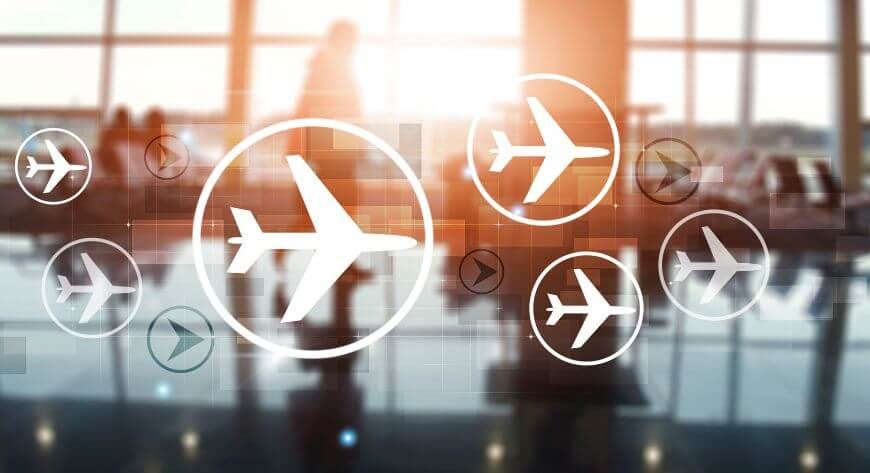In the past 12 months, one question continues to surface in nearly every meeting I attend. It’s an easy one to answer, but difficult in that the answer isn’t always what people want to hear. Is now the right time to talk about it? “It” being the 6000kg elephant that’s still in the room?

The question I keep getting asked is: “John, why haven’t more airlines implemented dynamic, continuous pricing?”
And it’s a good question considering that 1) the mathematics of how to compute the optimal, continuous price was published in 1994, 2) continuous pricing has already been effectively implemented at airlines across distribution channels with NDC, XML, JSON, and EDIFACT.
So, what’s the delay?
The Legacy of Legacy Systems
For decades, airline retailing has been held back by the weight of legacy systems. These systems, originally designed to handle reservations and inventory management, have become deeply embedded in airline operations. The transition from paper tickets to digital systems was a major leap, but since then, progress has been sluggish. Airlines still rely on PSS (Passenger Service Systems) that, despite being rebranded as “cloud-native” and “modular,” continue to restrict access to fundamental data and slow down innovation.
The Financial and Operational Impact of Sticking with Legacy Systems
Every airline executive knows that outdated technology leads to inefficiencies, yet the cost of inaction is often underestimated. The persistence of legacy systems results in:
- Operational Inefficiencies: Airlines remain dependent on closed-loop systems that resist integration, limiting their ability to optimize offers dynamically.
- Data Silos: Airlines cannot leverage their full data potential when access is restricted by outdated systems.
- Customer Frustration: Inflexible fare structures and outdated inventory management hinder personalization, negatively impacting customer experience.
- Missed Opportunities: The inability to easily access real-time inventory data prevents airlines from leveraging AI-driven pricing strategies effectively.
In this case, the cost of inertia is concurrent to the expected value creation of removing these legacy systems: around $40B US, or around $7/passenger, which is approximately 4% of total airline industry revenues according to a study by McKinsey & Company.
The Challenges and Risks of Transitioning to Modern Systems
Why the stagnation? If the technology has been available since 1994, why have more airlines not moved to modernize? The simple answer is that it is not without its challenges. The transition to next-generation retailing platforms requires overcoming several obstacles:
- Data Access Roadblocks: Airlines still struggle to obtain even basic inventory data, making it difficult to implement optimal pricing strategies.
- Vendor Lock-in: Despite marketing claims of “flexibility and modularity,” many PSS providers continue to control crucial data flows, forcing airlines into closed ecosystems.
- Implementation Complexity: The switch from legacy architectures to offer- and order-based systems requires significant investment in both technology and training.
- Resistance to Change: Internal inertia and organizational silos slow down adoption, even when the business case for modernization is clear.
- Operational Complexity & Expense: Many of these systems are deeply engrained with airline operations and any small glitch could have massive implications.
The Benefits of Implementing Dynamic Continuous Pricing
While a complete overhaul of legacy systems is required, airlines can begin making progress now by modernizing their pricing capabilities. Airlines can achieve significant improvements by implementing dynamic continuous pricing within their existing infrastructure today, helping them progress to modern airline retailing and embrace commercial autonomy.
In his recent post, Justin Jander outlined five trends driving airline retailing in 2025. Nearly all of these trends relate to how airlines can drive revenue today by embracing critical offer optimization and offer creation solutions. These solutions enhance the customer experience by enabling airlines to create optimized offers and bundles, driving revenue without requiring a disruptive transition.
Case Studies: Airlines That Made the Switch & Avoided the Inertia Trap
While the industry as a whole has been slow to adopt dynamic, continuous pricing, some airlines have broken free from inertia and can be an example:
- Lufthansa Group: Since 2020, this airline has successfully implemented dynamic continuous pricing across multiple channels using PROS Dynamic Offers and Real-Time Dynamic Pricing. Lufthansa has reported upwards of 5.2% revenue uplift when using revenue management and real-time dynamic pricing strategies.
- TAP Air Portugal: Recently announced, TAP Air Portugal is expanding its use of Real-Time Dynamic Pricing and Group Sales Optimizer to enable more targeted, strategic pricing strategies.
- 30+ Airlines Leveraging Dynamic Pricing for Group Sales: PROS Group Sales Optimizer has been in place since 2011, enabling airlines to price groups dynamically outside of the GDS/PSS, proving that the technology is not just theoretical but practical and scalable.
Time to Ask the Hard Questions
It’s been 30 years since the original research on dynamic pricing was published, yet many airlines are still unable to access the inventory data needed to implement it. NDC was meant to be the carrot, not the stick. If the industry wants real progress, we may need a bigger stick…
We need to embrace real modularity, not just rely on the marketing buzzwords. Only when that happens will we see an industry-wide transformation.
Frequently Asked Questions
The cost of inertia refers to the missed opportunities and inefficiencies caused by reliance on outdated legacy systems, which limit airlines’ ability to innovate and optimize pricing strategies. This can result in an estimated $40B in lost revenue annually.
Legacy systems restrict access to critical data, create operational inefficiencies, and hinder the adoption of modern technologies like dynamic continuous pricing, which are essential for improving customer experience and revenue.
Dynamic continuous pricing allows airlines to optimize fares in real-time based on demand and inventory. It enhances revenue potential and customer satisfaction by offering market-driven and competitive pricing.
Key barriers include data access roadblocks, vendor lock-in, implementation complexity, resistance to change, and the operational risks associated with transitioning from legacy systems.
Airlines can start by implementing dynamic continuous pricing within their existing infrastructure, enabling incremental progress toward modernization without a full system overhaul.
Modern systems enable better data utilization, improved customer personalization, enhanced operational efficiency, and increased revenue through AI-driven pricing and offer optimization.
Examples include Lufthansa Group and TAP Air Portugal, which have implemented dynamic continuous pricing and AI-driven solutions, achieving significant revenue uplifts and operational improvements.

